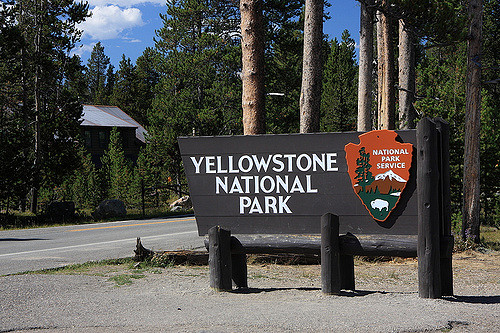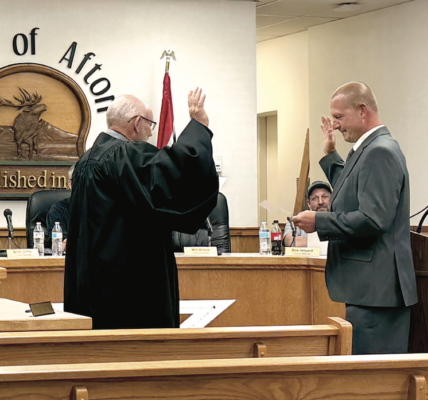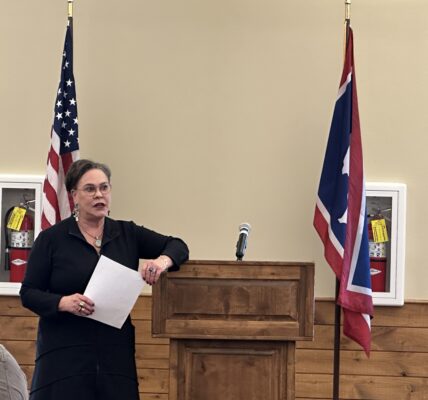By Mike Koshmrl
Jackson Hole News&Guide
Via- Wyoming News Exchange
JACKSON — Jeff Ruch was paging through the results of a Freedom of Information Act request about a categorical upgrade to Yellowstone’s WiFi infrastructure earlier this year when he came across an exchange that suggested 100 trees had been felled within a recommended wilderness area.
The reason for the cutting, he learned, was that lodgepole pines that started regenerating after the 1988 fire season had grown high enough in the 31 years since that they started shading a passive reflector panel deemed critical to telecommunications infrastructure in the Old Faithful area.
“We’re wondering, ‘Who gave them permission, and what was the rationale?’” Ruch, the Pacific director for the Public Employees for Environmental Responsibility, told the News&Guide.
“Among other thing, we’re trying to decipher is who decided this park reflector was essential,” he said. “Doing this in recommended wilderness raises questions.”
Wilderness is a class of federal land where mankind is supposed to be only a visitor, and our effect on the environment minimal. Machinery like chainsaws, for instance, are generally prohibited. Yellowstone doesn’t have any designated wilderness, but 90% of its acreage is “recommended” for protection by the 1964 Wilderness Act — and the land is essentially subject to the same restrictions.
Yellowstone’s telecommunication chief, Bret De Young, said the park went through the proper channels to OK the tree clearing, which occurred last October in the Black Sand Basin area.
“The park did an MRA to clear some of those trees, because they were blocking it and cutting out data links to everything from telephones, ranger computers, front desk computers,” De Young said. “That link was pretty much down.”
An MRA is an acronym for a “minimum requirement analysis,” which is a mandatory worksheet federal land managers must complete when they propose an action that runs counter to the Wilderness Act.
The worksheet, which the park provided the News&Guide, shows that Yellowstone’s “MRA Committee” supported the idea of using chainsaws to fell 15 or 20 trees that were interrupting the beam path to the passive reflector, which was built in the 1980s to provide radio, telephone and emergency communications in the Old Faithful area.
“The impact from the use of a chainsaw will have a very minor and short-term impact on wilderness character,” the document says in closing.
De Young signed off on that decision.
Another alternate plan considered but dismissed in the document called for using crosscut saws instead.
“This technique would be considered impractical and significantly unsafe compared to the other alternatives,” the MRA says. “Using crosscut saws to fell the trees would put staff at greater risk of injury.”
The passive reflector that Yellowstone cleared a path for is similar in style to the defunct, but still-standing white square structures that can be seen on Crystal Butte and Mount Glory. But, unlike those relics of Jackson Hole’s past, the national park to the north still relies on them. There were five such panels installed in the 1980s to extend service into Yellowstone’s interior, and “most” were located in recommended wilderness, the MRA document says.
PEER’s Ruch still wants details, and he submitted another Freedom of Information Act request to learn more, such as why the communications he saw described 100 trees being felled but the park’s MRA contemplates only 15 or 20 cut-down lodgepole pines. The park, however, rejected his latest information request, dubbing it “broad” and too “general” in nature.
Ruch appealed the Freedom of Information Act request denial.
His employer, PEER, has sued over FOIA issues before, including Grand Teton National Park in 2018 after the park violated required response timelines for releasing information related to work to improve a network of 11 cell towers and 55 miles of fiber-optic cable. Faced with the litigation, the park released the records and the lawsuit was dropped.
With the Yellowstone dispute, Ruch said he will do “anything” needed to see documents he requested related to the no-longer shaded passive reflector.
“Chain-sawing trees to improve wireless reception seems to clash with the very concept of what national parks are for,” Ruch said in a statement. “As the telecom footprint spreads, Yellowstone’s scenery is condemned to death by a thousand antennas and microwave dishes.”






